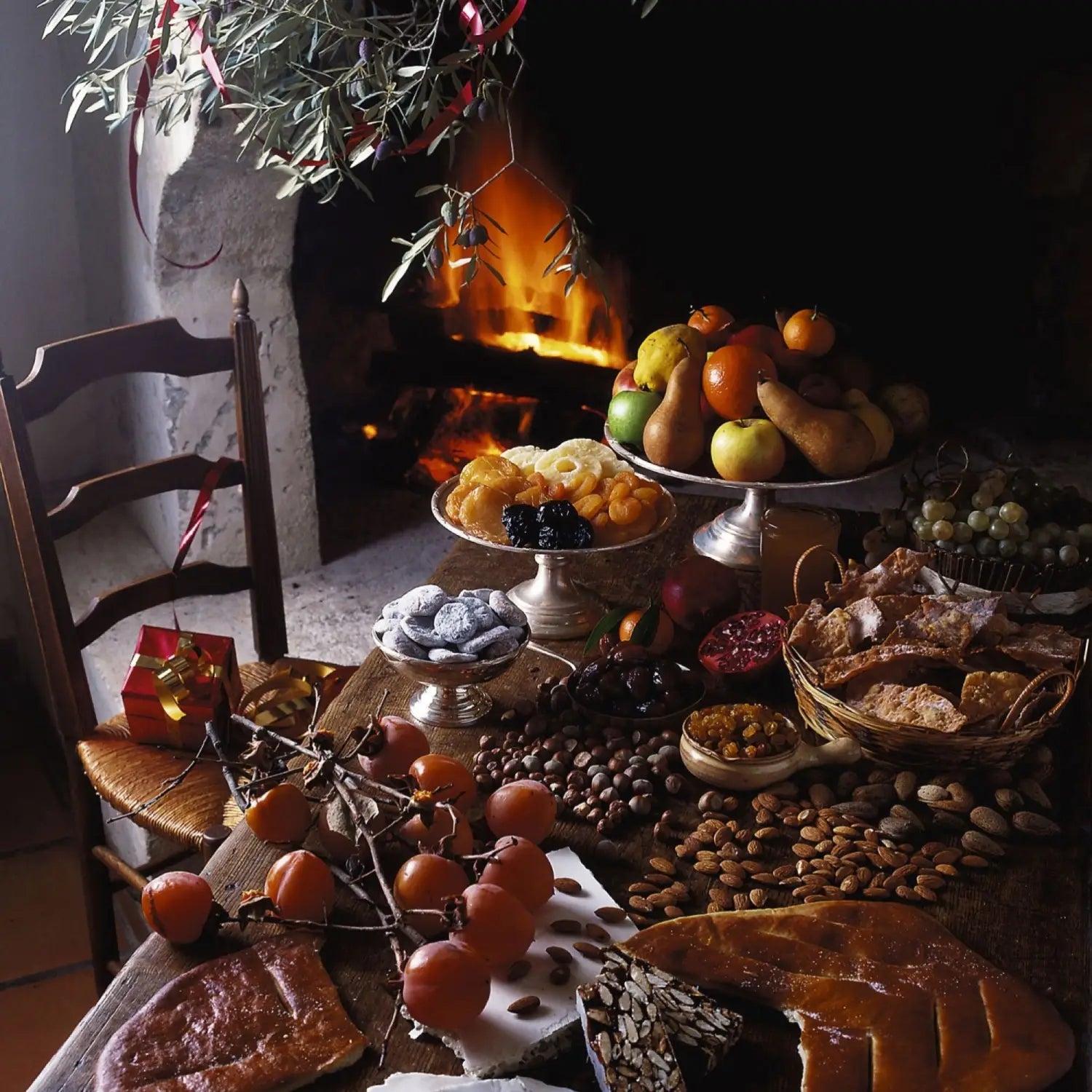
The Thirteen Desserts - A Mainstay of Christmas in Provence
There’s nothing quite like Christmas at home. And for us at Tariette, that means being in the wild and beautiful countryside of Provence. One of my favourite moments each year is braving the cold to heard to Midnight Mass. Wrapped up and with torches in hand, we’ll head out into the night. The sky will be dark and clear or clouded with snow, either way there’s a buzz in the air. We head to the village church, sing our hearts out to a few carols, and greet our neighbours who have gathered there. Then it’s time to hurry home to the spread that awaits us: the thirteen desserts.
This Provençal tradition has been keenly observed at Christmas for decades and combines thirteen local delicacies to represent Jesus Christ and the twelve apostles, with the Crhistmas meal, le Gros Souper, resembling the Last Supper. What’s wonderful about the thirteen desserts is that you’re rarely find that the spread is the same in any two households. While there are staples that make up every arrangement, there’s a lot of room for flexibility in what you pick.
We’ll look at the essentials as well as some personal favourites and leave you to put together your own Christmas selection. While we haven’t quite got thirteen desserts in stock, we can certainly set you on your way to gathering them!
First up is the aesthetic. The desserts are traditionally laid out on a table across three tablecloths representing the Holy Trinity, and many also light three candles as well. The famous first dessert, one you’ll find in every household, is the fougasse or pompe à ‘’Huile. This is a flatbread made with olive oil, and sometimes also contains anchovies or is coated in cheese. Grape jam is a common accompaniment, but others will dip it in mulled wine or sprinkle it with sugar. One steadfast rule is that the flatbread should be broken by hand rather than cut with a knife, just as Jesus broke the bread at the Last Supper. Legend has it that this protects your wealth for the year ahead as well!
Next up are “the four beggars”, a selection of dried fruit and nuts that symbolise four monastic communities: dried figs represent Fransiscans, almonds Carmelites, walnuts or hazelnuts for Augustianians, and raisins for Dominicans.
The last “must have” in any selection of les Treize—the thirteen—is nougat, both dark and white. Together they count as one dessert, though each Provençal delicacy will suit different tastes, with white nougat chewy and sticky and dark nougat far crunchier. The colours are variously said to represent good and evil, the winter solstice, or black and white penitents—choose whatever theme you wish!
You are once again free when it comes to filling out the remaining seven spots. Plenty of regional desserts are among the choices here, with biscuits like the navettes and croquants of Marseille or the calissons of Aix-en-Provence popular. Expect plenty of fruit too—a fresh fruit platter usually counts as a single dessert and will often feature oranges, apples, pears, and Verdau melon from Cavaillon, the melon capital of the world, where they are kept in straw all winter long.
There are a few other common desserts with reasons behind their inclusion, like the dates that represent the land of Christ’s birth. It’s said that Mary (or an infant Jesus in some versions) exclaimed, “oh” when they saw this fruit, and so it is tradition to find the shape of an ‘O’ on the date pits. Other Oriental fruits are said to represent the three wise men.
If you still have a few spaces to fill, you’ll often find pain d’épice, literally spicy bread, which is similar to gingerbread and popular in winter markets across France. We always make sure our house has plenty of moreish pralines on hand, and of course, as a grand finale, a light and chocolatey Bûche de Noël, the French equivalent of a Yule log.
Once you’ve gathered and arranged your thirteen desserts, you have to eat them of course. The spread is supposed to remain on the table for three days, and it is tradition that everyone has to try a bit of each one. Lastly, while it’s a lucky number for the dishes, you have to make sure there aren’t thirteen people around the table!
Now that you’ve got a good idea of the thirteen desserts tradition, why not try your hand at your own Provençal Christmas selection this year?



